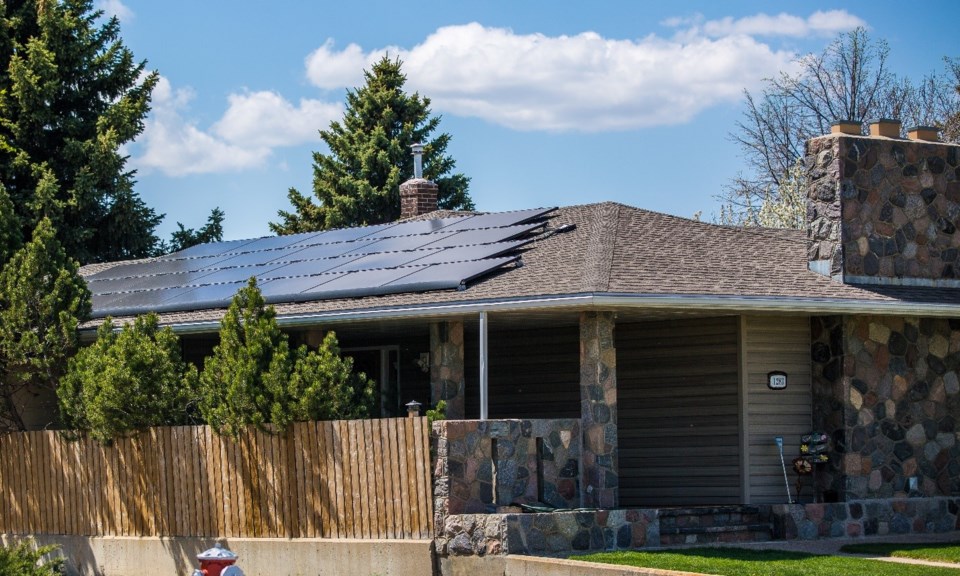Homeowner Bob Bellamy’s rooftop solar system has been hooked into SaskPower’s net metering program since May 2017, so he was disappointed to hear the program is being shelved indefinitely.
“It’s not going to be positive for the province (or) solar industry,” Bellamy told the Moose Jaw Express.
Due to unprecedented customer demand, SaskPower is expected to reach the 16-megawatt (MW) capacity limit for the program soon, which is two years ahead of the initial expectation of Nov. 30, 2021, the Crown corporation said in a news release. Since this past July, the average size of applications into the net metering program has increased by 80 per cent.
“We have seen a dramatic increase in uptake in the program in recent weeks, driven in part by federal funding that applies to large net metering projects,” Mike Marsh, SaskPower president and CEO. “Going forward we will (not accept new applications and will) be reviewing the program to ensure it remains financially sustainable and continues to meet the needs of our customers and our company.”
The net metering program offers rebates for solar installations and premium credits for surplus power. This makes it among the most generous net metering programs in Canada, the news release said. Net metering allows customers to generate up to 100 kilowatts of power — typically solar — to decrease their monthly power bills and receive credit for the excess power they generate.
Bellamy thought that with so much demand from Saskatchewan residents to use the program, SaskPower could do away with the rebates and simply allow residents to continue to hook up to the net metering program.
He pointed out Saskatchewan has the highest electrical fees in Canada, at 14 cents per kilowatt hour. In comparison, Manitoba’s fees are six cents per kilowatt hour.
“Finding cheaper ways to produce the electricity to me makes perfect sense,” he added.
If the program were to continue in its current form, the financial effect on the Crown corporation would be roughly $54 million per year by 2025, according to SaskPower spokesman Joel Cherry. Even if the program dropped the rebate, SaskPower would still lose money on it.
Homeowners who generate their own power and use the program are not paying their share for the overall maintenance of the power grid, even though they are connected to it, he added. Moreover, these small-sized installations cost more for SaskPower than larger-sized operations such as solar farms.
There will be another net metering program in place for SaskPower customers within weeks, Dustin Duncan, minister responsible for SaskPower, said days after the initial announcement. He said he was not prepared to wait half a year for SaskPower to decide on a new program.
In fact, he hopes a new program is in place by the end of October.
Bellamy has had a positive view of the solar panels on his roof ever since he installed them more than two years ago. That was actually the last time his household paid for electricity usage; the panels he also installed on top of his business have reduced his power consumption there by 50 per cent. He now pays only a small fee to SaskPower to access the grid.
The panels save him $200 per month on home power bills and about $400 per month on electricity costs at his business.
With the amount of surplus power his home panels generate and the fact he has reduced his power usage, Bellamy intends to purchase an electric vehicle in the future.




